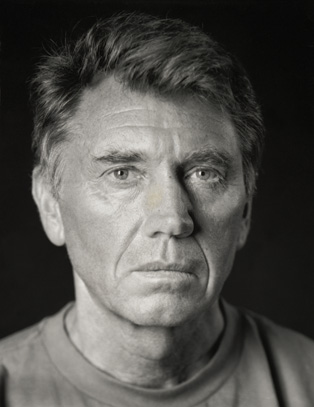
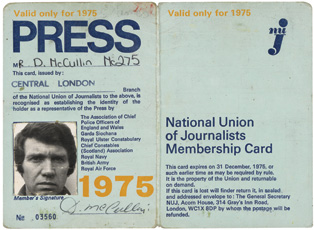
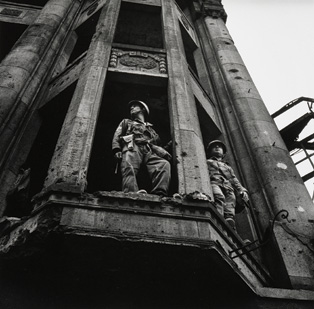
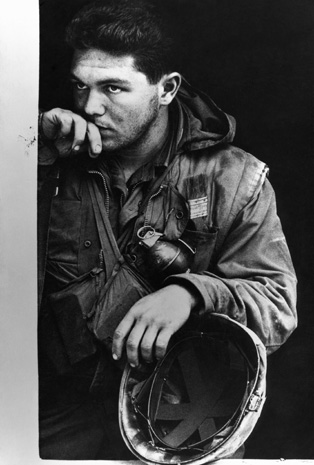
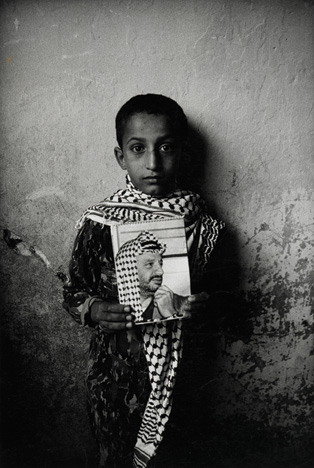
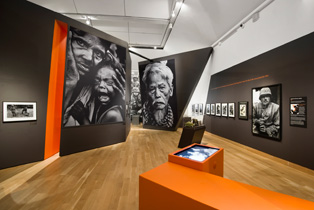
«Do you know a photographer my age who is still working in the dark room?»
Von Julieta Schildknecht
A long morning with a lot of press interviews in London on October 6th at the Imperial War Museum where one of the greatest war photographers of an extinctioned era shows a new exhibition: «Shaped by war» presents the largest collection of Don McCullin’s work ever seen on public display.
Don McCullin is one of the most important photographers of our generation. For more than 50 years, his uncompromising black and white photographs have shaped our awareness and understanding of modern conflict and its consequences.
His photographs are accompanied by a newly commissioned film interview, magazine spreads and personal memorabilia. Together, they tell the remarkable story of his life and work, including his most famous assignments in Berlin, Vietnam, Cambodia, Biafra, Bangladesh and the Middle East.
Key periods in McCullin’s life including his early experiences of evacuation and the Blitz, his commissions from Berlin in 1961 and Cyprus in 1964 and his most famous work for the Sunday Times are explored alongside more recent projects with Christian Aid and, in the last few years, his photographs of still life and English landscapes at his home in Somerset.
The british photographer Don Mc Cullin (76), one of the photography masters who helped writing the press photography history world wide, photographs nowadays mainly landscapes. He enjoys the tranquility of the Sommerset’s reclusive nature and became an art photographer. His photography is still the same but is today considered a fine art photography!
«I don’t like perfection, I am a perctionist. The eyes are very important for me (points out at a picture) bad light, but it doesn’t matter», the eyes from the portrait of a black person are all I notice in this impressive image… «colours are not important… this is my world, black and white.»
Dyslexic, what interests him most are images : they transmit many messages without words! He likes to identify masters like Alfred Stieglitz or André Kertész by their images which he knows well, due to his photographic memory.
We tour the exhibition backwords… his latest phase interests me most, more than his war photography which is now exhibited in this museum referring to war. His generosity and humbleness and his absolutely conservative way of aproaching life deeply strikes me.
The tactful images which are exhibited at the Imperial War Museum carry a harmonic aesthetic balance which the curator Hillary Roberts well explores… none of the images are repeated, something rather difficult to experience in most of photography exhibitions I had the opportunity to see – so I had the pleasure to listen during one of his interviews, his comment on his ability of still describing the moment, in all details, of any image he ever photographed, as it would be photographed now.
Don Mc Cullin knows how to work with time frames. But I like to see how he transports objects he once photographed into our present moment when he exhibits the photographed objects next to some of his photos… like the three statues used for a still life photo… and the old boots and helmets next to his famous Vietnam soldier portrait (the same portait which hangs at the Frontline club – our journalists club in London).
In his opinion, today what matters more than war, are the social problems and poverty at his home country which should be more photographed. He is annoyed about the fact that many war photographers today go to war for the sake of the kick of it and yet, one does not see any memorable war photo being published like 20 or 30 years ago: the war and desgrace photography from today does not impress anymore.
Newspapers today sell more by publishing celebrities stories instead of showing our daily worlds social problems. What matters, is to be famous and every scandal related to the famous and rich personal lifes…
The british photographer belongs to Phillip Jones Griffith’s generation, from whom in spite of the social differences and age between both, he was best friends. Don Mc Cullin was born in a poor family, grew up in a basement sharing the same bedroom with his parents. He didn’t study much, went to primary art school but had to leave with 15, when his father died. The army was his school where he discovered his photographic talent. Griffith was a radical socialist in spite of his wealthy background and university degree. « Phillip, a gentleman, wanted to change the world.» Both friends fought and worked intensevely for the photographic quality and took very serious their responsability to commnunicate through images our human gloomy suffering and death in war times to the political press of the 60’s and 70’s… two knight members of a «round table» called Magnum.
This reminds me of Roland Barthes text «The World of Wrestling» and I can even imagine war photographers almost as real « wrestlers» : «Wrestlers, who are very experienced, know perfectly how to direct the spontaneous episodes of the fight so as to make them conform to the image which the public has of the great legendary themes of its mythology. A wrestler can irritate or disgust, he never disappoints, for he always accomplishes completely, by a progressive solidification of signs, what the public expects of him. In wrestling, nothing exists except in the absolute, there is no symbol, no allusion, everything is presented exhaustively. Leaving nothing in the shade, each action discards all parasitic meanings and ceremonially offers to the public a pure and full signification, rounded like Nature. This grandiloquence is nothing but the popular and age-old image of the perfect intelligibility of reality.» Roland Barthes in Mythologies. 1957.
He lives in Somerset «since 30 years this house belongs to my family». He admires the peace in himself, a peace he has finally been able to acheave through the contact to nature!
The farmers in Sommerset are desapearing because of the lack of government incentives. The land and landscape are wonderful. «but you see ?… no animals… there are no animals.»
Photography and classical music are the most important things in his life, Don Mc Cullin often listens to classical music while working in the dark room !
In one year, «I promise», he will not work in the dark room anymore… but, leave photography, never! Photography is his Life, an obsession almost as big as the printing of his images that takes hours or days to get that necessary light one image needs in order to be appreciated.
He carries, threshold, and his right hand rests on his chest, something that makes him enjoy life even more than photography : a long vertical scar as a result of a cardiac cirurgie… yes, his images pulse the light of the universe! because he is seeing with his heart whenever he photographs the universe of the existing light of this human living unfair world.
The camera brought him always closer to people like his recent work on HIV people in Africa or the people in the streets of London… documenting another war, the war of survival! a subject he understands since he was a child… an element he shows in his images thanks to his trust and respect for the human being.
«Photography for me is not looking, it’s feeling. If you can’t feel what you’re looking at, then you’re never going to get others to feel anything when they look at your pictures.» Don Mc Cullin in Sleeping with Ghosts. 1994.
The interview is finished with a beautiful task: «don’t forget to transmit my best regards to my good good friend René Burri !»
To accompany the exhibition, Jonathan Cape, in association with IWM, has produced a new book: Shaped by War traces McCullin’s career through his photographs.
„Shaped by War: Photographs by Don McCullin“
Imperial War Museum IWM London
Lambeth Road
London SE 1
www.iwm.org.uk
7 October 2011 – 15 April 2012

